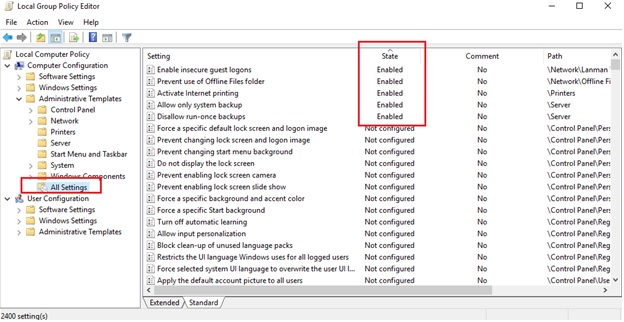

Logon/Logoff: This section allows you to audit account lockouts, IPSec events, logons, and logoffs. ▪ĭS Access: This section allows you to audit Directory Service access, changes, and replication. ▪ĭetailed Tracking: This section allows you to audit DPAPI, process creation, process termination, and RPC events. ▪Īccount Management: This section allows you to audit changes to user accounts, groups, and computer accounts. If multiple policy settings are applied for a particular OU, the administrator can set the order in which the settings are applied.Īccount Logon: This section allows you to audit credential validation, account logon events, Kerberos authentication events, and Kerberos ticketing events. The remaining OU GPOs will be processed in descending order until the OU that contains the directory object is reached.

OU settings Group policies associated with an OU are applied last in the processing order, but the processing starts with the OU highest in the directory structure. If multiple domains are involved, the administrator can set the order of preference in which those settings will be applied. 3ĭomain settings Group policies associated with a domain object follow the completion of the site settings. The system administrator can set a specific order in which the site policies are to be applied, if more than one policy is defined. Site settings Group policies associated with the site in Active Directory are processed next. There is only one local GPO per computer. Local settings Each computer has its own local GPO, and these settings are applied before any others. Group Policy settings are applied in the following order: 1


 0 kommentar(er)
0 kommentar(er)
